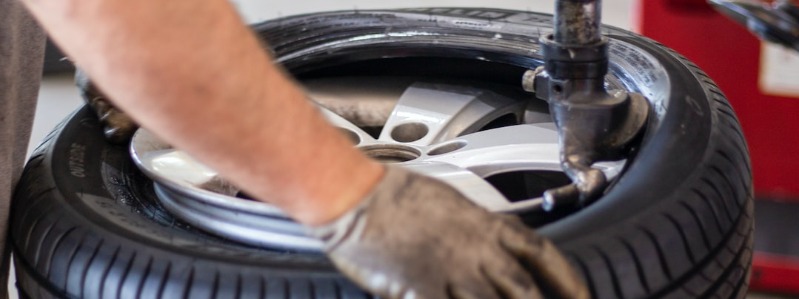Unbalanced Tires – Do I need to balance my tires?
Contents
To help your vehicle drive in the safest and best condition possible, it is important to ensure you have the wheel alignment and the wheel balancing checked regularly. Many drivers ignore the signs of a lost alignment or balancing, and as a result, they will find their vehicles difficult to keep going straight down the road.
What happens if your tires are out of balance?
Imperfections, blemishes in the rubber, and damage to a tire or rim can throw a wheel “out of balance.” That means that one section of the tire or rim is heavier than another. Some of the signs to watch for include swerving from side to side while driving on a straight road, feeling every little rock on the road, vibrations in the steering wheel, and the feeling that the steering wheel is too loose. An unbalanced tire will begin to shake at higher speeds and cause vibration in the steering wheel. This will eventually damage your tires, suspension, and steering system.
What happens when your tires are unbalanced
When your tires are unbalanced, the results can be quite noticeable. The first sign is usually a vibration through the steering wheel or the seats. This can be felt at low or high speeds, but it is usually more pronounced at faster speeds. If you’ve ever felt like your car is shaking or wobbling while driving, chances are your tires are unbalanced.
In addition to discomfort, unbalanced tires can also cause uneven tire wear. This can result in the tires needing to be replaced sooner than expected, which can be an expensive and unnecessary cost. Uneven tire wear can also affect the handling of your vehicle, making it more difficult to control, especially in wet or slippery conditions.
Another issue that can arise from unbalanced tires is decreased fuel efficiency. When your tires are unbalanced, it can cause your vehicle to work harder to maintain speed, which can result in lower gas mileage. This can add up over time and cost you more at the pump.
Unbalanced tires can also stress your suspension and steering components unnecessarily. This can lead to premature wear and tear, which can be costly to repair or replace.
What does it mean to balance tires?
One wheel at a time is removed from the car, placed on a computerized machine, and spun around to determine the heaviest side. A small lead weight is attached to the tire to counterbalance heavy spots. Once the weight is the same on all sides of the wheel, the wheel will easily spin on the machine. You should have your wheels balanced whenever your tires are repaired or rotated.
Many drivers are unsure if their vehicle has lost its alignment or a wheel has lost its balance, as many of the signs are similar. Your tire service shop can determine what is needed and take care of it quickly and easily.
Why Balance Tires
Balancing your tires is an important aspect of vehicle maintenance that ensures a smooth and safe ride. When your tires are not balanced, it can cause a number of problems that can lead to costly repairs and even accidents.
Tire balancing involves adding small weights to the tire to equalize the weight distribution around the tire and wheel assembly. This helps to ensure that the weight of the tire and wheel are evenly distributed when the car is in motion.
When your tires are not balanced, it can cause uneven tire wear, which can lead to the need for premature tire replacement. It can also cause vibrations in the steering wheel or throughout the car, which can be a safety hazard and cause driver fatigue.
In addition, unbalanced tires can cause strain on other parts of the vehicle, such as the shocks and suspension system, which can ultimately lead to costly repairs.
Regular tire balancing can help prevent these issues and ensure your vehicle runs smoothly and safely. It is recommended to have your tires balanced every 5,000 to 6,000 miles or whenever new tires are installed. Don’t underestimate the importance of tire balancing; make it a regular part of your vehicle maintenance routine.
Cost of not balancing your tires
Ignoring tire balance can be costly in more ways than one. The most obvious cost is the reduced lifespan of your tires. A tire that is not balanced will create uneven wear on the tread and will eventually lead to a shorter tire life. This means you must replace your tires more often than necessary, which can be expensive.
An unbalanced tire can also stress your vehicle’s suspension and steering components. This extra stress can cause these parts to wear down faster than normal, leading to expensive repairs.
Another cost of not balancing your tires is decreased fuel economy.
When your tires are unbalanced, it can cause your vehicle to vibrate at certain speeds, which results in increased rolling resistance. Your car will have to work harder to maintain its speed, resulting in decreased fuel efficiency and increased fuel consumption.
An unbalanced tire can affect your driving experience by causing a vibration in the steering wheel or through the car’s chassis. This can make for an uncomfortable and even dangerous ride, especially at high speeds.
When to balance your tires
Tire balancing is a crucial aspect of vehicle maintenance. It is essential to be aware of when to balance tires, as it can affect the performance and safety of your vehicle. Generally, it is recommended to balance tires every 5,000 to 7,000 miles or when you notice vibrations or irregular wear patterns on your tires.
If you have recently replaced or rotated your tires, it is also advisable to balance them. Additionally, if your vehicle has undergone any suspension or steering repairs, it is important to balance the tires to ensure optimal performance and handling.
Some vehicles may require more frequent tire balancing due to their design or tire type. Consulting your vehicle’s owner manual or contacting a professional mechanic can help determine the ideal tire balancing frequency for your specific car or truck.
Overall, keeping your tires balanced at the recommended intervals can improve your driving experience, extend the life of your tires, and ensure safe vehicle handling.
How to balance tires at home
Balancing your tires is a simple process that can be done by a professional or at home with the right tools. Here are the basic steps to balance your tires:
- Remove the wheels from your vehicle. This can be done with a jack and lug wrench.
- Remove the tires from the wheels. This can be done with a tire changer or by a professional at a tire shop.
- Clean the wheels and tires. This will ensure that dirt or debris won’t interfere with the balancing process.
- Install the wheel and tire on the balancing machine. The machine will spin the wheel and tire and measure any imbalances.
- Add weights to the rim to balance the tire. The weights will be added to the rim in the areas where the machine detects an imbalance.
- Reinstall the tire and wheel onto the vehicle.
If you do this at home, you will need a tire balancing machine. These machines can be expensive, so having a professional do it for you may be more cost-effective.

